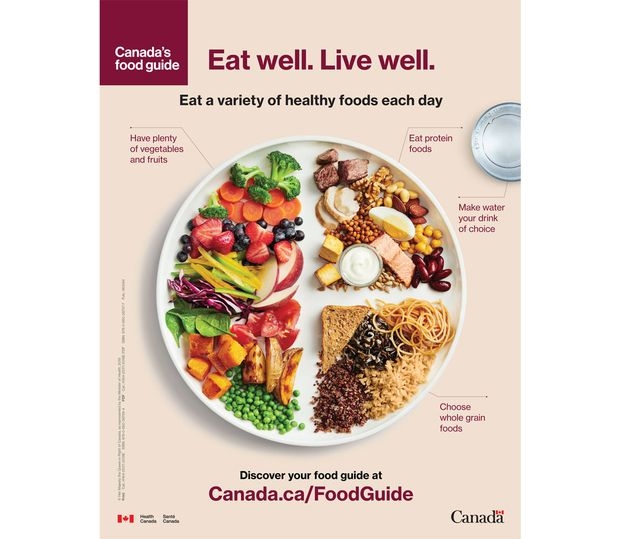By: Andrew Pipe and Yves Savoie
We now have a Canada’s Food Guide that has potential to help challenge the impact of diet on Canadians’ health. The new updated version of this vital document, the first such major change since 2007, has been much anticipated because we need to fix the diet train-wreck Canadians are on.
We are consuming too much salt, saturated fat and sugar, particularly from highly processed food and sugary beverages.
Our children are at particular risk; for the first time we have kids who have spent their whole lives eating unhealthy diets high in processed foods. We are all paying the price in terms of failing health and rising healthcare costs. The cost of diet-related disease in Canada is estimated to be over $26 billion per year and poor diets are a leading risk factor for death.
The revised Food Guide is the opportunity to chart a new dietary course for Canadians. Not only is it used directly in shaping menus and allocating budgets for food for most public institutions, from schools to seniors’ residences, the Food Guide is taught to Canadian students and is used by industry, retailers and consumers to shape what we eat.
Fortunately, in creating this new Food Guide Health Canada has resisted the industry lobbies and followed the scientific evidence – concluding we need to be eating more fruits and vegetables, making and enjoying more meals as families and eating less processed foods and sugary drinks, including fruit juices that can contain as much or more sugar than soft drinks.
But for Canadians to be able to follow and benefit from the new Food Guide, they need more help.
There are two crucial next steps to be taken before Canada has a complete healthy eating strategy.
The first is helping Canadians where they buy their food – in the grocery store. With tens of thousands of products to choose from and little time to make purchase decisions, we need an easy way for Canadians to identify products that are consistent with the direction of the new Food Guide.
Specifically, what is needed are clear, easy to understand alert labels on the front of packages of foods that are high in salt, saturated fat and/or sugar. Our current system of complicated numbers hidden on the back or sides of packages isn’t sufficient to help consumers to make quick decisions.
The most effective labels don’t give any numbers – they simply say through a prominent label/symbol on the front of packages: “High in sugar” (or saturated fat or salt), and notes the information comes from a legitimate source, such as Health Canada.
Such a simple and clear system has been seen elsewhere to have beneficial effects. Consumers will act on clear advice about the nutrient content of a product by choosing them less often. And many manufacturers will reformulate their products with lower levels of salt, saturated fat or sugar specifically to avoid being branded with an alert label. That helps everyone.
The second vital step towards a healthy eating strategy is to ensure big-business marketing does not undo the positive messages of the Food Guide – one of which is to “be aware of food marketing.” This message is especially important when it comes to children, in fact so important that we need to stop allowing companies to market foods high in salt, sugar and saturated fats to children. This includes sugary cereal in boxes that are often adorned with cartoon characters and colours that appeal to children. Distressingly, young people get more of their caloric intake from highly marketed ultra-processed foods than any other age group, especially kids 9-13 years.
Marketing makes healthy food buying a war parents can’t win – they need help.
The House of Commons has already voted with a strong majority on legislation that is now before the Senate which would ban such advertising to children. The time is now for Senators to act on the will of the democratically elected House of Commons and to move forward with the final step to build a more healthy future for children in Canada.
As there was with the Food Guide, there will be loud push-back from food industries and companies to protest these necessary other elements of a healthy eating strategy. The federal government must continue – as it did with the Food Guide – to stand up to industry lobbying and follow the scientific evidence.
Let’s at least give Canadians a fighting chance to meet the excellent goals of our new Food Guide.
Dr. Andrew Pipe, CM, MD, FRCSPC(Hon), of the University of Ottawa Heart Institute, is a professor in the Faculty of Medicine at the University of Ottawa and Chair of the Heart & Stroke Board of Directors.
Yves Savoie is Chief Executive Officer of Heart & Stroke.

